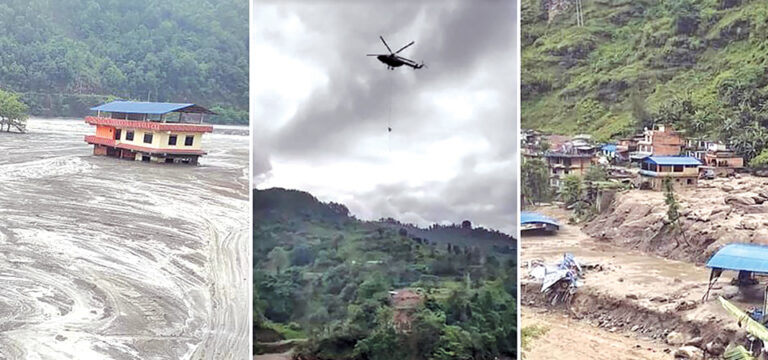
The government has approved the National Adaptation Plan (NAP) for Climate Change which aims to reduce the country’s vulnerability to climate change, and to facilitate the integration of climate change adaptation into policies, programs and activities.
“The NAP aims to reduce the risk of impact by integrating climate adaptation into different levels of government and thematic areas and contribute to economic prosperity by building a climate-resilient society,” said joint secretary and spokesperson at the Ministry of Forest and Environment Megh Nath Kafle.
The aim of the NAP is to increase the adaptability and resilience of key natural, social and economic sectors and service providers at risk of climate change crisis.
It also aims to integrate the issues of climate change into policies, strategies, plans and programmes of all the thematic areas at the local, provincial and federal levels, emphasising gender equality, social inclusion, livelihood and governance.
Ensuring equitable distribution of resources for climate change adaptation through national and international financial arrangements is another aim of NAP, according to the Ministry.
“We move forward as per the Action Plan but due to budget issues, we are 95 per cent dependent on the international community for resources,” Kafle siad.
A lot of programmes are in the pipeline to address the issues of climate change but in order to address the issues on full phase, we need international funding,” he said. Climate finance is the main agenda for the government to address its negative impacts.
“The funding for loss and damage is a fund to be claimed from the international community, this is not a money to be invested by the government,” he said.
Nepal’s contribution to global greenhouse gas emissions is only 0.027 per cent, which is negligible. The developed countries, which are major emitters of greenhouse gases, should pay for the losses and damages, he added.
Nepal is highly vulnerable to climate change and has already experienced changes in temperature and precipitation at a faster rate in recent years. The effects of climate change have directly affected the Himalayas with increasing snowmelt and threats of a glacial lake outburst floods.
In a recent address at COP-26 in Glasgow, Prime Minister Sher Bahadur Deuba drew global attention to temperatures rising higher than the global average, glaciers receding, snowfall decreasing and melting in the Himalayan region.
Extreme climate events are increasing over the years, thereby causing huge losses to the economy, ecology, and human lives.
“Around 80 per cent of Nepal’s population is at risk of natural and climate-induced hazards,” said the PM at his climate summit address.
PM Deuba urged the world leaders to recognise the specific climate vulnerability in the high mountains, and accord high priority to the mountain agenda in all climate-related negotiations.
To mitigate climate vulnerability, the NAP has set out priority programmes in the eight thematic sectors as outlined in the National Climate Change Policy (2019).
The programmes include adaptation actions that are best able to address climate vulnerabilities and risks in the short term -2025, medium-term 2030, and long term – 2050, as well as adaptation actions that contribute to the achievement of national economic and development priorities.
A total of 64 priority programmes have been identified in the NAP. Implementation of NAP requires a budget of is USD 47.4 billion, with implementation target by 2050.
Nepal will contribute USD 1.5 billion and external support totaling USD 45.9 billion is anticipated to implement the NAP.
Source : TRN,






